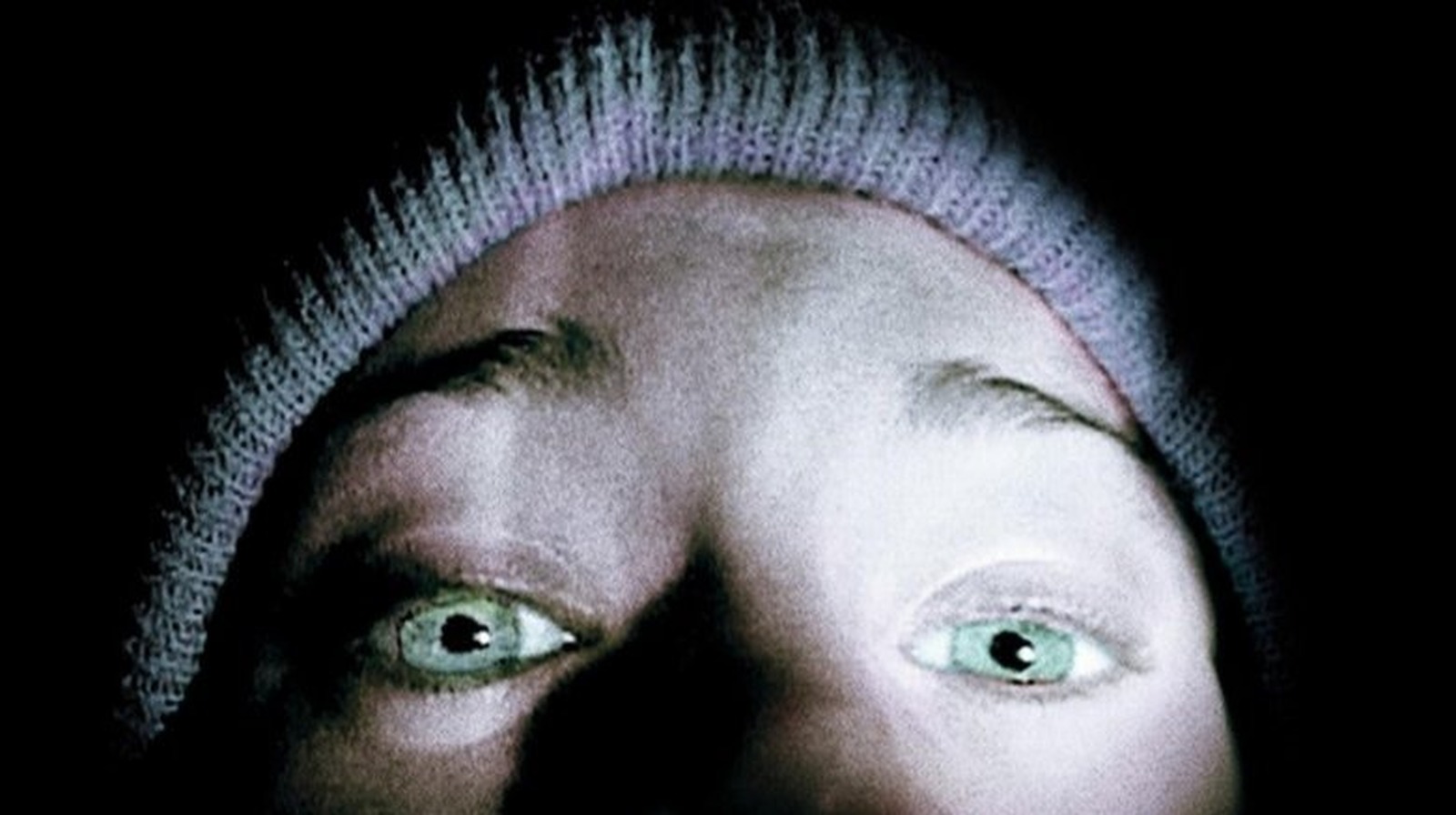The Blair Witch Project (1999), co-directed by Daniel Myrick and Eduardo Sánchez, is widely regarded as a pioneering found-footage horror film. Following three student filmmakers, Heather Donahue, Joshua Leonard, and Michael Williams, venturing into the forests of Burkittsville, Maryland, the film explores their investigation of the Blair Witch legend. Despite its modest budget, the film’s innovative approach and chilling atmosphere drew audiences and influenced future films such as Paranormal Activity and Cloverfield. Its ending, particularly ambiguous and haunting, continues to fuel debate over the fate of the protagonists.
The film opens with the trio interviewing locals about the Blair Witch, a figure entwined with dark folklore and mysterious disappearances. Locals describe her as a half-human, half-animal entity. The students then enter the Burkittsville woods, where their journey turns nightmarish. Strange noises, eerie stick figures, and the gradual unraveling of their sanity create an escalating tension. Josh vanishes mysteriously, leaving behind bloodied rags, which Heather discovers, hinting at the brutality of his fate.
The climax takes place at the ruins of Rustin Parr’s house, historically burned in 1941. Heather and Mike encounter the house inexplicably intact, filled with disturbing symbols and handprints. Mike is attacked off-camera, leaving Heather to explore the basement, where she sees him facing the corner, mirroring a past murder by Parr. Before viewers can comprehend the situation, Heather screams as she is attacked, and the camera drops, cutting abruptly to credits. The fate of Heather and Mike is left unresolved, heightening the film’s psychological horror.

The Blair Witch Mythology Inspired The Film’s Horror And Heightened Psychological Tension
Though the Blair Witch itself is fictional, the filmmakers drew inspiration from real and imagined folklore. The story traces back to 1785, when Elly Kedward was accused of harming children and left to die in winter, after which many children in the town vanished. Over decades, the legend expanded, including the 1940 killings of seven children by Rustin Parr, who claimed a ghostly woman compelled him. These layers of mythology create a deep, unsettling backdrop that enhances the film’s tension and adds authenticity to the narrative.
One of the film’s most unsettling sequences is Josh’s disappearance. Heather finds fragments of what is believed to be his remains wrapped in a bloody shirt, including teeth and hair. The sequence is deliberately vague, leaving audiences to infer whether the Blair Witch or an agent of hers is responsible. This uncertainty is central to the film’s psychological impact, relying on implication and imagination rather than explicit gore to instill fear.
The film’s conclusion has inspired numerous interpretations. The prevailing theory suggests the Blair Witch lures Heather and Mike into Parr’s house, ultimately killing them. Other theories propose a time loop trapping the protagonists in the forest, or even involvement from locals or possessed Josh. The 2016 sequel and video game adaptations explore these ideas further, though many are considered non-canonical. The ambiguity of the ending is a deliberate choice by Myrick and Sánchez, designed to maintain suspense and allow viewers to project their fears onto the unseen horror.

How The Blair Witch Project’s Ambiguous Ending Revolutionized Horror and Influenced Found-Footage Films
The ambiguous ending secured The Blair Witch Project as a cult classic. Its marketing strategy, presenting the film as actual recovered footage, blurred the line between reality and fiction, enhancing the terror. Despite the lack of a conventional resolution or visual monster, audiences were left deeply unsettled. This approach influenced countless found-footage films, demonstrating that psychological dread and suggestive horror can be more effective than traditional monsters or overt violence.
Upon its release, the film was widely praised by critics and audiences alike. The slow-building tension, naturalistic performances, and found-footage approach created a unique viewing experience. Critics such as Roger Ebert highlighted the film’s ability to frighten through implication rather than spectacle. While reviews rarely addressed the ending directly to avoid spoilers, the collective acclaim emphasized the film’s innovative storytelling and psychological intensity. Its success made The Blair Witch Project one of the most profitable films of its time, grossing nearly $250 million on a minimal budget.
While sequels and remakes expanded the Blair Witch mythology, none matched the impact of the original. Book of Shadows: Blair Witch 2 and the 2016 reboot introduced more elaborate lore, CGI monsters, and time-travel concepts but were widely regarded as inferior. The original’s appeal lay in its simplicity, low-budget realism, and the effectiveness of leaving the audience’s imagination as the main vehicle of fear. Sequels attempted to provide answers to the mysteries the 1999 film left open, but these additions often diluted the ambiguity that made the original compelling.
The Blair Witch Project’s ending demonstrates the enduring power of suggestion and ambiguity in horror. By leaving the fate of Heather, Mike, and Josh unresolved, and by never fully revealing the witch, the film maximizes psychological terror. Its minimalistic production and low-budget constraints contributed to the creative decisions that made the ending memorable.
Beyond narrative innovation, the film’s marketing, realism, and suspenseful storytelling set a new standard for horror, establishing found footage as a viable and influential subgenre. The ambiguity itself becomes the message: some horrors defy explanation, and true terror lies in the unknown.



